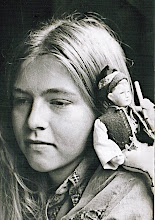
Samuel G. Shartle was not a teacher, but the U.S. Military Attaché to Berlin from 1909 until 1915. Although military attachés were not spies, they were the army's eyes and ears abroad at a time when there was no satellite photography or sophisticated electronic intelligence. Captain Shartle was a frequent guest of Kaiser Wilhelm at events and dinners, and especially the military manoeuvres of which Kaiser Wilhem was so fond. A New York Times article from September 16, 1909, entitled "Kaiser Sees Airship at Work with Army" starts out like this: Surrounded by a brilliant company, including the King of Württemberg, the Grand Dukes of Baden and Hesse, Archduke Francis Ferdinand, Winston Spencer Churchhill, The Earl of Lonsdale, and Capt. Samuel G. Shartle, the American Military Attache at Berlin, Emperor William witnessed the dramatic appearance of the military dirigible balloon Gross II, which emerged from the clouds overhanging the valley of Tauber this morning.
A year later, and the Kaiser is once again holding his military manoeuvres, this time in Elbing, Prussia. Once again, Captain Shartle and other important international visitors were invited to observe. Captain Shartle took the opportunity to send a postcard to his wife in Berlin, which he seems to have passed around the table for others to sign as well. It was sent on September 9, 1910. If only I could make out all the names!
Here's what I've been able to decipher so far (with lots of big question marks, so please offer suggestions.) Some of the names are highlighted with links, in case you're interested in finding out more about them.
Greetings from
- Lt. Col. Pellé, French Military Attaché (updated 3/2/2011 - Thanks to Peter H. from Australia for that information.)
- Von Palten ?
- L. Calderari (Maggiore Generale Conte Luigi Calderari, Commander of an Italian Infantry Division during WWI, but I'm not sure what his title was in 1910...Attaché?)
- A. Michelson (1907 Nobel Prize winner in Physics)
- Shartle (U.S. Military Attaché to Berlin)
- Dorrin
- Alick Russell (British Military Attaché and son of Lord Odo Russell, 1st Baron Ampthill)
- Schenfelt (update 3/1/11 - Gustav Oskar Von Schenfelt, Swedish Military Attaché - Thanks to PB in Germany for that information)
Hearty Greetings from
- M. Mehdi Khan (presumably Malik Talib Mehdi Khan, Deputy Commissioner Ambassador to Kabul and former Prime Minister of the Princeley State of Bahawalpur)
- A. Lüttwitz (General Major Arthur Rudolf Freiherr von Lüttwitz, German Military Attaché to England and Russia, and during World War I, commander of several infantry brigades and divisions. Here's another picture of him - standing on the right.)
- Hironobu Ono (from Japan, but not sure who he was)
And then, the Turkish signature with the EB in the box appears to be none other than
- Enver Pasha (known as Enver Bey at the time or Ismael Enver Efendi.) He was the main leader of the Ottoman Empire in both Balkan Wars and World War I.
Finally, written very small at the bottom it says: Your husband behaved very well.
Here's a picture of Enver Pasha from a German postcard:
As a postscript, I also found this letter written to Time magazine from Col. Shartle in 1929:
May I call attention to an error in the title below the picture on p. 14, TIME, Nov. 25? It should read "Theodore Roosevelt and Friends," omitting "Kaiser Wilhelm," for he was not there. This picture was taken early in the morning, May 10, 1910, at the exit of the private waiting room of one of Berlin's railroad stations (Stettiner Bahnhof, I think), while the Colonel and members of the American Embassy there to receive him waited for their conveyances to come up. The crowd outside was cheering. I recall this occasion very distinctly and even more distinctly the actual meeting of Theodore Roosevelt and Emperor Wilhelm, which took place the next day at an entrance of the Neu Palais, Potsdam; the Emperor stepped forward and heartily greeted the ex-President as he alighted from his carriage. I happen to know, because I was present on both occasions—as the Military Attache at Berlin and, for the week of the Colonel's visit, his Aide. The four figures in the doorway, shown in the picture in question are, left to right, Theodore Roosevelt, myself, a German officer (probably an adjutant representing the Emperor), Irwin Laughlin (the First Secretary of the Embassy).
S. G. SHARTLE
Colonel, C. A. C. (Dol).
*Many thanks to Yasuko and Jens for the Japanese and Arabic translations for this post.*



















